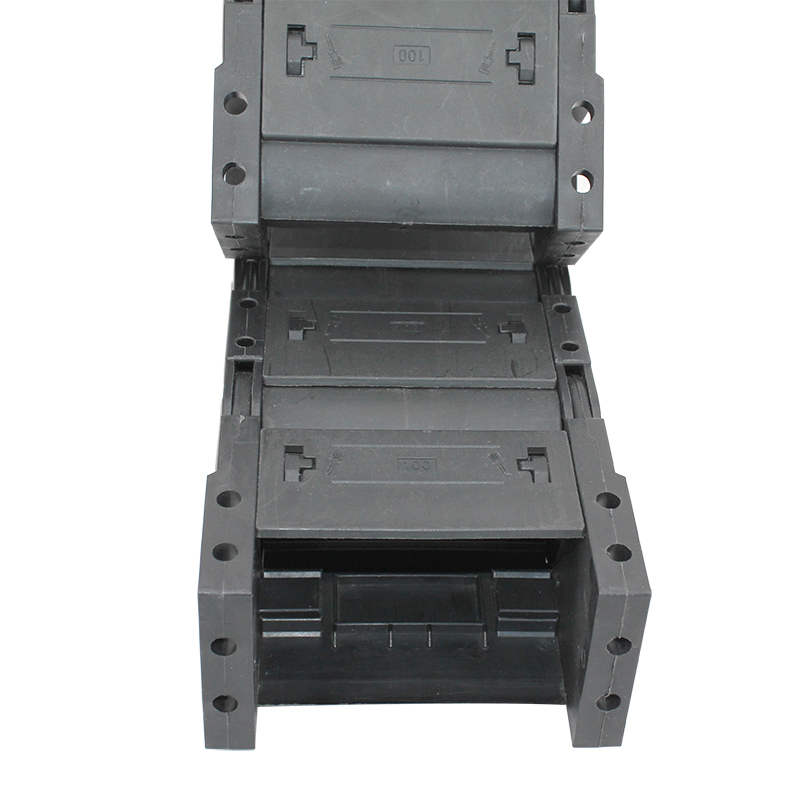plastic cable carrier chain
Understanding Plastic Cable Carrier Chains Features and Benefits
In the world of industrial automation and robotic systems, the management of cables and hoses is an often-overlooked but crucial aspect of ensuring efficient and safe operation. One of the most effective solutions for this purpose is the plastic cable carrier chain, a versatile and innovative component designed to protect and guide cables in dynamic environments.
What is a Plastic Cable Carrier Chain?
A plastic cable carrier chain, also known as a drag chain or energy chain, is a modular system that organizes and protects moving cables and hoses in machinery and equipment. Made primarily from high-quality plastic materials, these chains are lightweight yet robust, making them suitable for various applications, from simple machine tools to complex robotic systems.
The design of a cable carrier chain consists of linked segments that can pivot, allowing for flexible movement while preventing cables from tangling or being pinched. This mechanism is critical in applications involving repetitive movements—such as robotic arms or CNC machines—where excessive wear and tear on cables due to movement can significantly reduce their lifespan.
Key Features of Plastic Cable Carrier Chains
1. Lightweight and Durable Materials Made from advanced plastic materials such as polypropylene or polyamide, these chains provide excellent strength-to-weight ratios. This lightweight nature reduces the overall load on machinery, enhancing energy efficiency and speed.
2. Modular Design The modular design of plastic cable carrier chains allows for easy customization. Users can adjust the length and internal width of the carrier to accommodate various cable sizes, ensuring optimal fit and protection.
3. Flexibility in Movement These chains can move in multiple axes, providing continuous motion without restrictions. Their flexibility makes them ideal for applications that require complex trajectories, such as in robotics or conveyor systems.
plastic cable carrier chain

4. Protection from Environmental Factors Plastic cable carriers are designed to resist abrasion, chemicals, and moisture, making them suitable for use in harsh environments. This protective feature ensures that cables remain intact and operational, thus lowering maintenance costs and downtime.
Benefits of Using Plastic Cable Carrier Chains
1. Enhanced Safety By properly organizing cables and hoses, plastic cable carrier chains minimize the risk of tripping hazards and accidental disconnections, fostering a safer working environment.
2. Improved Aesthetics and Orderliness These chains offer a neat and organized appearance, reducing clutter in workspaces, which can enhance productivity and make maintenance tasks easier.
3. Cost-Effectiveness Investing in quality cable carrier chains can lead to long-term savings. By prolonging the life of cables and reducing the need for frequent replacements, companies can significantly lower their operational costs.
4. Ease of Installation and Maintenance Most plastic cable carrier chains are designed for straightforward installation, often requiring minimal tools and expertise. Additionally, they simplify the replacement of cables, as the process can be completed quickly without needing to dismantle major components of the machinery.
Conclusion
Plastic cable carrier chains represent a significant advancement in cable management solutions, offering a blend of durability, flexibility, and safety. Whether used in manufacturing, robotics, or automation, their ability to protect cables while facilitating smooth movement makes them an essential component in modern industrial applications. As industries continue to evolve and embrace new technologies, the demand for efficient cable management solutions like plastic cable carrier chains will only grow, reinforcing their role in the future of automated systems.








